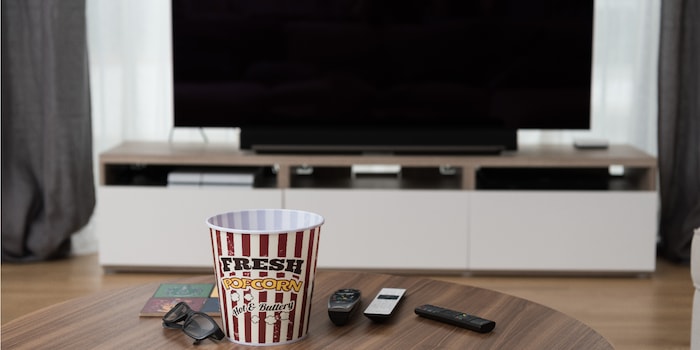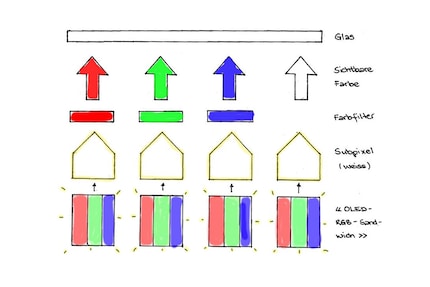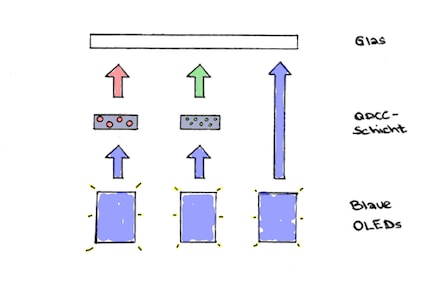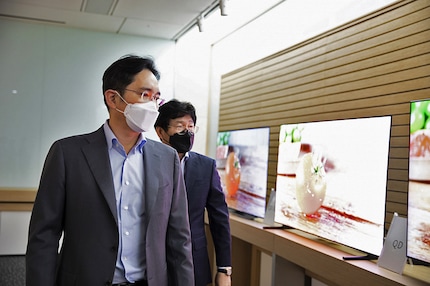
News + Trends
Is Samsung preparing for an OLED TV comeback?
by Luca Fontana

Samsung is investing a lot of money to convert its factories to Quantum Dot OLEDs and plans to begin mass production in 2021. But what is Quantum Dot OLED?
Bye-bye QLED, welcome OLED? It’s not unsurprising news. Golem.de. first reported this news, claiming that Samsung was planning to start producing Quantum Dot OLED TVs from 2021. This isn’t entirely new; the news agency Reuters and the South Korean newspaper The Investor said the same as far back as October last year. And so did I last August when the rumours had been circulating for months.
What’s new in the context of Samsung's future plans according to Golem's article is that the South Korean manufacturer is planning to stop producing LCDs completely by the end of 2020. This would mean the end of QLED TVs and monitors as we know them today, as QLEDs are LCDs with fluorescent nanoparticle coating. Samsung calls the particles Quantum Dots – hence the «Q» in «QLED».
But what is Quantum Dot OLED?
OLED pixels are carbon-containing LEDs. That's why there's an «O» in their name: it stands for «organic». Simply put, OLED pixels create the image while controlling their own brightness.
LCD pixels can’t do this. They only create the image and rely on additional LED backlighting. I’ve explained this in more detail here:
The advantage of OLED televisions is that the pixels can be switched on and off as desired. This results in true black and better contrasts. The colours are created by colour filters.

LG currently has a monopoly on OLED panel production. Samsung wants to put an end to this, even though the manufacturer has been strongly opposed to the technology since its OLED TV withdrawal and has repeatedly critisised the technology – especially with regard to burn-in. This is what Samsung said to me at the end of August 2019:
Samsung Electronics believes that the existing OLED panel technology needs technological improvement before it can be used in the production of televisions.
However, Samsung seems to be happy with the improvements that were made in recent months. Which improvements? Unlike LG, Samsung uses no RGB OLED layer that lights up in white and is then combined with colour filters. Instead, only blue OLEDs are used. The bluish light is then coloured by the nanoparticle layer. Samsung calls this layer «quantum dot color converter» – QDCC for short.

This is how it works: the larger the particles, which are about two to ten nanometres in size, the heavier they are. The heavier the particle, the slower it vibrates when light hits it. The vibration decides on the colour of the particle. With the size of the nanoparticles, Samsung can therefore control exactly which colour the bluish OLED light is converted into. The elementary colours red, green and blue – in the case of blue, nothing is converted because the OLED light is already blue – are used to create the final coloured image.
In summary, Samsung wants to combine the best of two worlds in its QD OLED screens.
Sounds good in theory.
In October 2019, the South Koreans announced their intention to invest the equivalent of about 10.5 billion Swiss francs in the development and production of OLED panels with quantum dots by the end of 2025. However, Samsung has so far neither officially affirmed nor denied whether the production of LC panels will come to a complete halt by the end of 2020. Upon request, Samsung Switzerland issued the following statement:
Samsung takes product quality and customer satisfaction very seriously and strives to provide our customers with the best television experience.
Not exactly a denial. But the brief statement says more than a thousand words. If there were no truth to the rumours, Samsung would continue its anti-OLED plans.
What if Golem's article is true?
The South Koreans would be wary of making any major announcements as early as now. A statement like the one seems to fit in. The TV season with the 2020 novelties has only just started and is all about QLED TVs – of all things. From a marketing perspective, it would be unwise to call the TV innovations of the year old hat already.
Yet, Samsung has talked a lot and often about Micro LED, a screen technology that’s supposed to replace OLEDs soon. At least, that’s the impression given by the prototypes that have been shown for years at product fairs such as IFA in Berlin or the CES in Las Vegas.
The problem with micro LEDs is that their modular design is well suited for large-format screens such as advertising billboards, stadium monitors or as cinema screens. But the South Koreans haven’t yet succeeded in building micro-LED screens that are small enough for home cinema use or even suitable as computer monitors. If so, then only as a proof of concept, not as an actual marketable product.
However, Samsung recently presented prototypes of its QD OLED televisions for the first time. When and where? On 19 March 2020 at the production site of Samsung Display in Asan, South Korea.

Let's summarise: the recently published pictures, Samsung's almost 11 billion franc commitment to invest in QD OLEDs and the fact that the South Koreans will start mass production as early as next year – all this could indicate that micro LED technology isn’t as advanced as assumed. QD OLED could be the temporary solution. Maybe.
But has Samsung has solved the burn-in problem, which the company likes to cite to score off LG? Nobody knows.
I write about technology as if it were cinema, and about films as if they were real life. Between bits and blockbusters, I’m after stories that move people, not just generate clicks. And yes – sometimes I listen to film scores louder than I probably should.
Interesting facts about products, behind-the-scenes looks at manufacturers and deep-dives on interesting people.
Show all